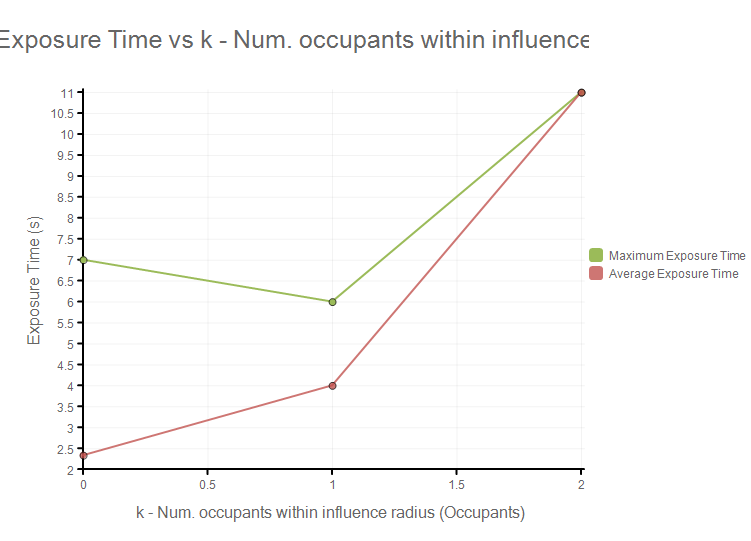Proximity Analysis and the Thunderhead development process
The upcoming release of Pathfinder Results version 2021.2 will include a Proximity Analysis feature based on the paper EXPOSED: An occupant exposure model for confined spaces to retrofit crowd models during a pandemic by Enrico Ronchi and Ruggiero Lovreglio. In the paper Enrico and Ruggiero lay out a method to create metrics that measure occupant exposure in microscopic scale environments, which enables evaluation of the efficacy of infection mitigation measures. In simpler terms, they supply a way to measure how effective social distancing measures are at preventing the spread of disease. This post will lay out our development process to create this and other features and summarize the proximity analysis feature as implemented in version 2021.2.
The Thunderhead development process
At Thunderhead Engineering, we have periods of time that we call "Project Phoenix" where developers can work on any project that is interesting to them, whether it is a marketable feature or just a fun research project. During our Project Phoenix iteration last June, two of our interns worked on a project involving tracking the spread of an infectious disease in a Pathfinder model. This initial project modified the Pathfinder simulator to produce a simple SIR-like model during occupant movement.
After this project was completed, our team discovered Enrico and Ruggiero's paper. After speaking with Enrico and showing him their prior project, our interns and the rest of the development team decided to modify the project to reflect the paper's suggestions and implement it as a new feature in our Results viewer. After 3 iterations of the project, and some help from the rest of our development team, the proximity analysis feature is ready for release.
What is Proximity Analysis?
Unlike the first iteration of the project, the Proximity Analysis feature shipping in the upcoming 2021.2 release does not modify the Pathfinder simulator. Instead, it post-processes the output of Pathfinder simulations in our Results program. The Results Viewer generates a proximity analysis report that provides various metrics regarding occupant exposure, including the amount of time that k number of occupants are within a proximity radius of another occupant, how many occupants are violating the proximity radius at any given point in time, and a global exposure time metric. Because this feature is part of Results viewer and does not modify the simulator, users will not need to re-create or re-run simulations to generate Proximity Analysis reports. They can be generated using the results from any existing Pathfinder simulation.

How would Proximity Analysis be used?
One case where proximity analysis is particularly useful is when evaluating social distancing measures. By performing a baseline/control simulation, changes made to the Pathfinder model can be evaluated by their effects on the global occupant exposure metric to determine if the changes are effective in enforcing social distancing. This can also be used to compare different social distancing measures against each other to determine which ones are the most effective.
Conclusion
Our team enjoyed creating this new Proximity Analysis feature, and we look forward to continuing to improve our products. You will be able to access Proximity Analysis in the upcoming 2021.2 release. If you have any suggestions for features you would like to see in our products, you can email them to our Support team at support@thunderheadeng.com, and we will consider them.
Bibliography
Ronchi, Enrico, and Ruggiero Lovreglio. "EXPOSED: An Occupant Exposure Model for Confined Spaces to Retrofit Crowd Models during a Pandemic." Safety Science, vol. 130, Oct. 2020, p. 104834., https://doi.org/10.1016/j.ssci.2020.104834.